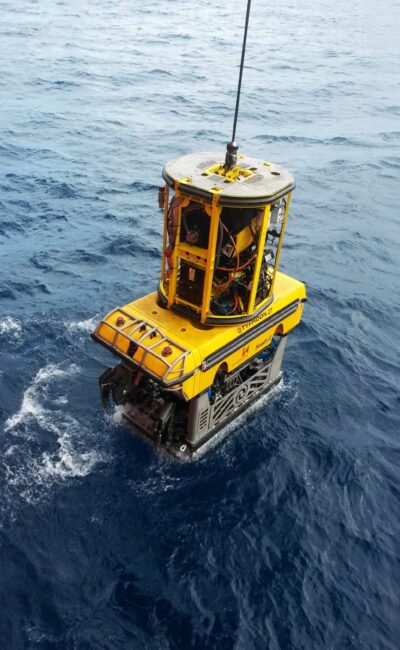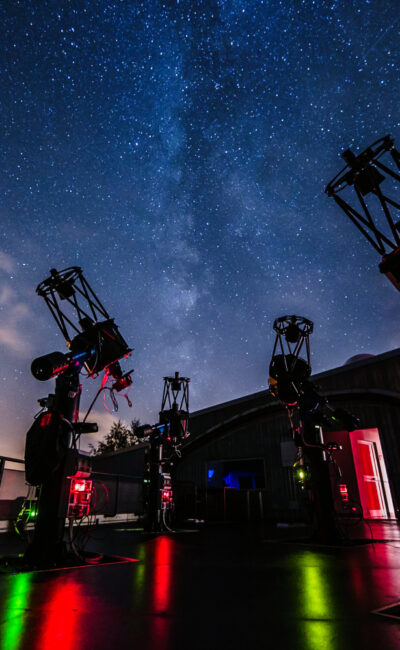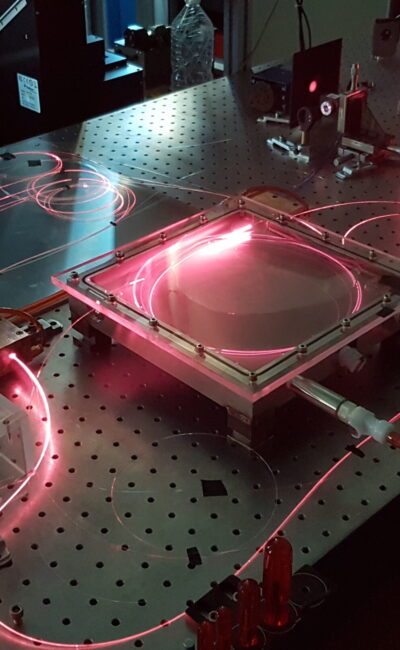- Maritime
NOAA tests DriX to demonstrate survey force-multiplier capability
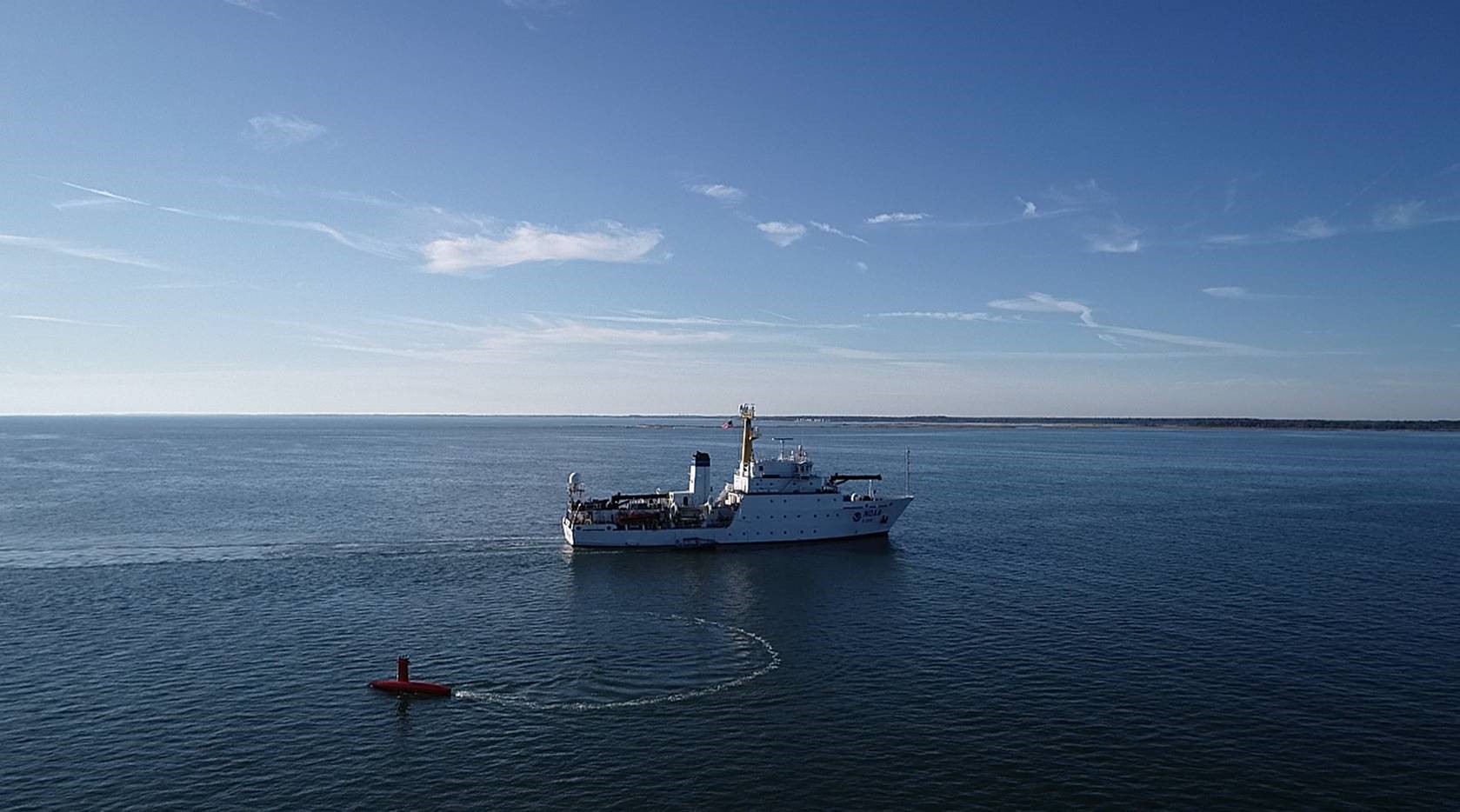

The end of 2019 saw DriX sailing alongside a U.S. NOAA’s (National Oceanic and Atmospheric Administration) hydrographic survey vessel, NOAA SHIP Thomas Jefferson for a series of sea trials. Those tests, designed to demonstrate hydrographic survey force-multiplier capability in offshore waters, were successfully conducted thanks to the ship’s crew, DriX and its unique Deployment System (DDS).
“We had the chance to meet with NOOA’s Office of Coast Survey Director, Rear Admiral Shepard M. Smith, right after the launch of DriX in December 2017” explains Guillaume Eudeline, Global Business Developer for the Shipyard division. “He is advancing NOAA’s Office of Coast Survey initiatives by modernizing digital charting, and by increasing the use of autonomous systems for hydrography and was truly impressed with DriX capabilities. We worked through an industrial partnership with the University of New Hampshire in order to test DriX and assess how NOAA and the U.S. hydrographic community could benefit from our USV.”
One DriX was subsequently sent to New Hampshire (New England) in October 2018 and stayed with UNH for over a year. The University’s team of surveyors ran a series of tests to assess how DriX could be operated in the field, and if it could be used to conduct continuous survey operations in unchartered waters to increase surveying efficiency.
The tests being a success, NOAA decided, in October 2019, to integrate DriX into its daily hydrographic survey operations in a field trial, to see if iXblue’s USV could overcome the drawbacks of many ship-deployable USVs such as their speed, sortie endurance, ability to collect multibeam data in moderate sea states, as well as the difficulty in deploying and recovering them from a pitching and rolling ship in a seaway. USVs’ launch and recovery is indeed a true challenge for operators trying to bring more autonomy in their surveys and represents about 50% of the operational effectiveness.
“The tests, during which we learnt a lot, were overall another great success and NOAA was truly pleased with the DriX evaluation and that of its DDS, as it demonstrated a novel, custom-designed method for deployment and recovery via the Thomas Jefferson’s installed survey launch davits,” concludes Guillaume Eudeline “It was also a great opportunity for iXblue to work with an iconic administration, and benefit from their first-rate feedback, opening possibilities for improvements. We now look forward to the next steps in our collaboration, with further sea trials in 2020.”
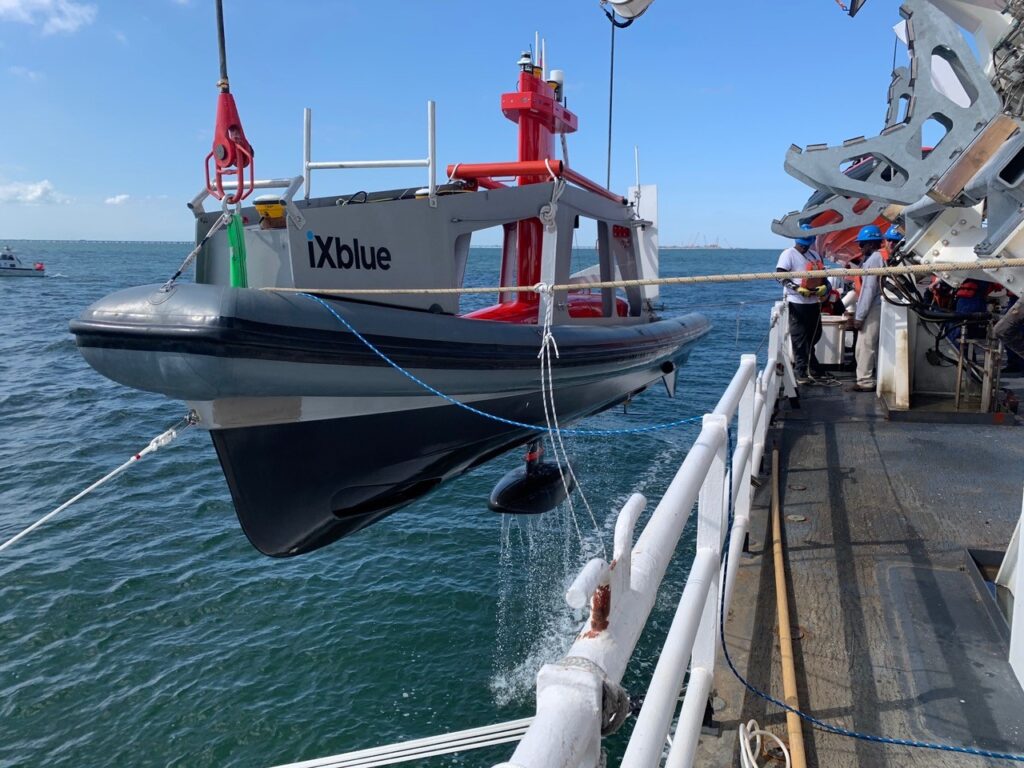
DriX DDS: A functional launch and recovery system
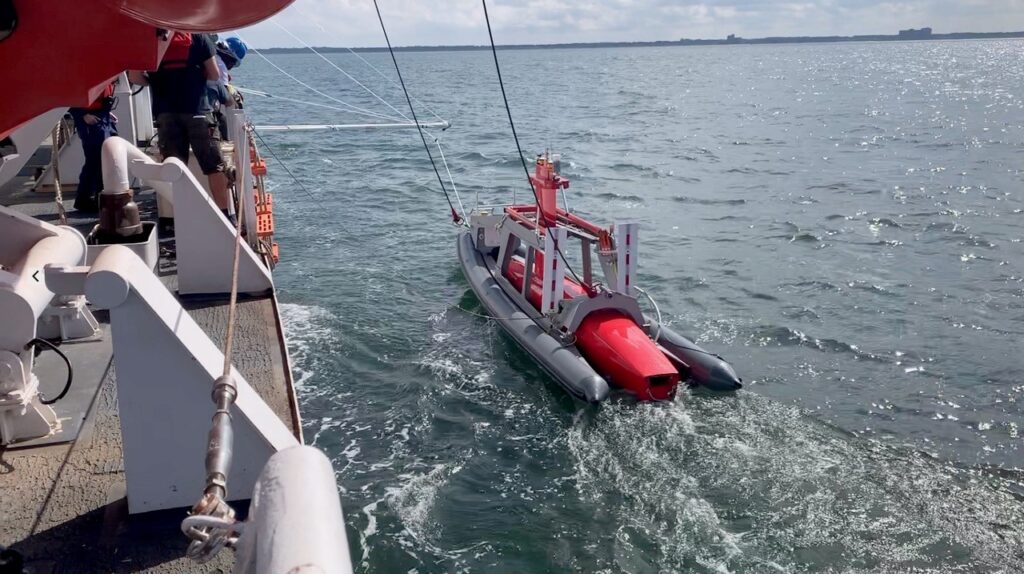
Certified by Bureau Veritas, the DriX Deployment System (DDS) has been designed for the safe and efficient launch and recovery of the USV. Benefiting from a RHIB shape and making use of either one or two lifting points, DriX DDS can be deployed from a davit, a crane or an A-frame. On this particular occasion, the Thomas Jefferson’s Vestdavit was temporarily altered with the addition of a removable metal adaptor, bolted on the existing structure, that acted as a cradle for DriX and its DDS during the sea trials.
DriX furthermore benefits from an auto-docking capability, which enables the USV to perform an automated maneuver to reenter its DDS, without the need for human intervention. The auto-docking capability relies on continuous exchange of positioning information between DriX (provided by its embedded GNSS and Phins C7 INS) and the DDS (through its GNSS and Quadrans AHRS). This auto-docking will be a feature of future trials on the NOAA Ship Thomas Jefferson.
Learn more about DriX HERE
